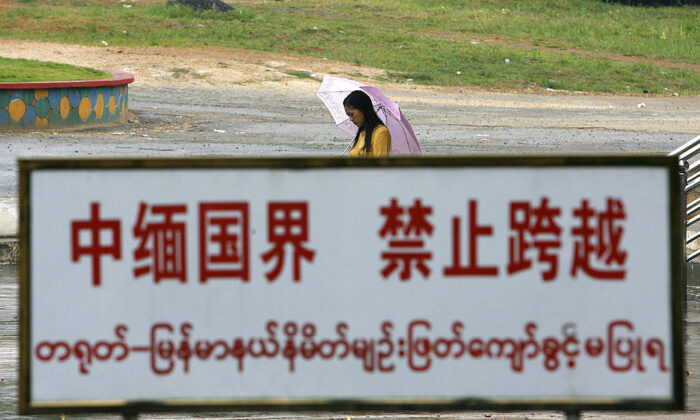China is actively safeguarding its significant investments in conflict-ridden Burma to ensure their protection and advancement. ((Zau Ring Hpra/AFP via Getty Images)
Operation 1027
Operation 1027 was a coordinated effort by three resistance forces known as the Three Brotherhood Alliance (3BTA), consisting of the Arakan Army, Myanmar National Democratic Alliance Army, and the Ta’ang National Liberation Army. It was initiated on Oct. 27, 2023, targeting the military junta and its State Administration Council in Burma’s northern Shan State along the Chinese border.
This two-month operation involved simultaneous attacks on the Burmese Army, police force, and other military installations along the border with China, resulting in the capture of significant territory. The junta acknowledged defeat in several sectors in the Shan state, including the important border town of Chinshwehaw, on Nov. 1, 2023.
The instability caused by Operation 1027 has raised concerns about potential refugee inflows into Yunnan province, straining local resources and security. However, there are other aspects to consider. China may have allowed the crisis to unfold due to its own frustrations with the military junta.
“Disruptions in cross-border trade harm Chinese economic interests, including investments in infrastructure and natural resources. Additionally, increased military activity near the border poses risks of violence spillover, impacting China’s border security,” stated Ms. Pukhrem, highlighting China’s focus on protecting its investments.
Beijing aims to ensure that Burma remains a cooperative neighbor supporting China’s regional initiatives like BRI. China’s pragmatic approach is influenced by its relationships with the Burmese military and various ethnic armed groups, she added.
“While this may seem detrimental to Chinese interests, China’s influence over insurgent groups along the border was not effectively utilized at the start of the crisis. This was due to China’s frustration with the Junta’s Border Guard Forces and their failure to address illegal activities affecting Chinese nationals,” Mr. Jyoti explained.
At the start of Operation 1027, the 3BTA targeted BGF-supported criminal activities along the border, leading to anti-China sentiments among Junta loyalists and protests in Yangon and Naypyidaw.
Brokering a Ceasefire
China facilitated an “immediate ceasefire” between the Burmese military junta and the 3BTA during talks in Kunming, China. This ceasefire was crucial for peace and stability along the China-Myanmar border.
Both sides agreed to implement the ceasefire immediately, disengaging military personnel and addressing disputes through peaceful negotiations. They also pledged to protect Chinese citizens and projects in the border area. The ceasefire effectively halted fighting in Shan state.
Ms. Pukhrem noted that China’s role as a mediator showcased its influence over Myanmar’s economy. By maintaining relationships with various factions, China ensures its position as a key player in Myanmar’s political landscape.
China’s strategic engagement strategy allows it to navigate Myanmar’s political changes while expanding investments in the country’s infrastructure and resources. Ultimately, China aims to maintain its influence in Myanmar through economic leverage, diplomatic mediation, and strategic partnerships.
The expert noted that due to China’s close proximity and significant investments, it holds more sway in Burma compared to other geopolitical players in southeast Asia, such as the ASEAN nations.
“ASEAN countries, while significant, cannot rival China’s extensive economic involvement in Myanmar,” she explained. “ASEAN faces challenges due to internal divisions and a lack of unified policy, which diminishes its diplomatic power. The organization’s non-interference principle and consensus decision-making can impede prompt action.”
On April 24, 2021, the leaders of nine ASEAN member states and Myanmar’s junta leader, Min Aung Hlaing, reached a “five-point consensus”. This agreement included the designation of a special envoy for Burma to engage with all stakeholders.
According to Ms. Pukhrem, ASEAN can contribute to the mediation efforts but may struggle to counter Chinese influence. Collaborating with India could be a strategic approach for ASEAN moving forward.





